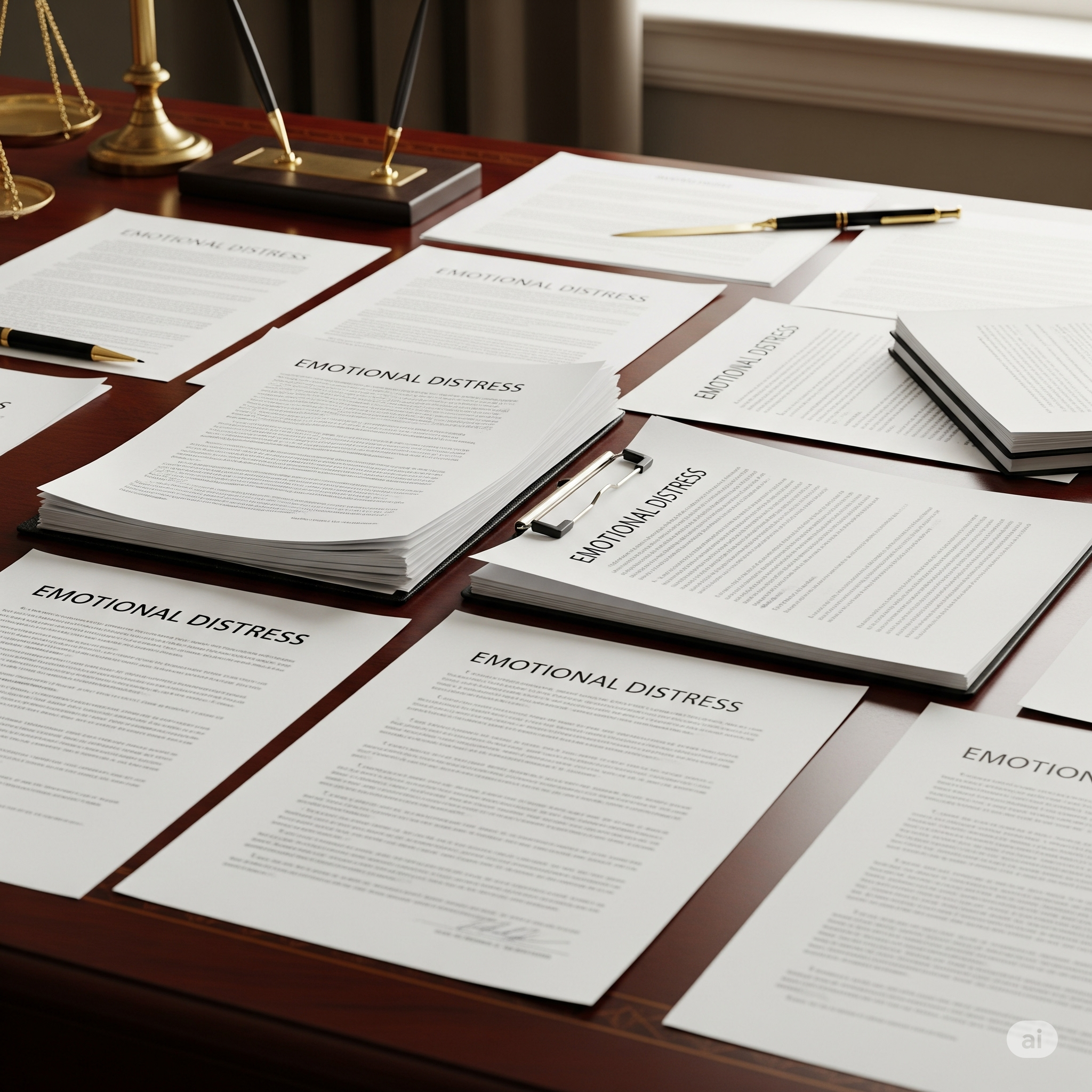Introduction
Have you been emotionally devastated by a company’s actions? Perhaps it was a wrongful dismissal, continuous harassment at work, or a traumatic customer experience that left deep psychological scars. While many only think of lawsuits in terms of physical injuries or financial losses, the law also protects your emotional well-being. You can sue a company for emotional distress, and in many cases, you can win substantial compensation.
In this detailed guide, you will learn everything you need to know about emotional distress compensation claims, your legal rights, and how to build a strong case in court.
What is Emotional Distress in Legal Terms?
Emotional distress refers to mental suffering caused by someone else’s negligent or intentional actions. This includes anxiety, depression, humiliation, insomnia, PTSD, or any other psychological trauma that can be proven by credible evidence.
There are two main types of emotional distress recognized by US law:
- Negligent infliction of emotional distress (NIED): When a company unintentionally causes harm through negligence.
- Intentional infliction of emotional distress (IIED): When harm is caused deliberately or recklessly, often by abusive or scandalous behavior.
Understanding the difference is essential, as each has different proof requirements.
Can You Really Sue a Company for Emotional Distress?
Yes, you can. U.S. civil courts allow plaintiffs to file emotional distress claims if they can prove that the company’s actions were directly responsible for serious psychological damage.
Here are examples of qualifying scenarios:
- A manager repeatedly bullies an employee to the point of collapse.
- A company knowingly allows racial or sexual harassment to continue.
- A client is threatened or publicly humiliated by the staff.
- A wrongful termination that leads to extreme anxiety and depression.
If these acts have caused you measurable psychological damage, you may have a case for a workplace emotional abuse lawsuit or similar legal action.
Legal Requirements to Prove Emotional Distress
To win your case, you must meet certain legal criteria. The burden of proof lies with you, the plaintiff.
1. Evidence of the Defendant’s Conduct
You must demonstrate that the company behaved scandalously, negligently, or recklessly.
2. Causal Link
You must establish a direct link between the conduct of the company and your emotional distress.
3. Severity of Distress
The distress must be severe and lasting. A slight annoyance or anger does not count.
4. Evidence
The courts prefer documented evidence, such as:
- Psychiatric evaluations
- Medical records
- Testimonials from mental health professionals
- Witness statements
- Journal entries
Without this proof, your case may not be taken seriously.
Step by Step: How to Sue a Company for Emotional Distress
Let’s go through the process, from identifying your claim to requesting compensation.
Step 1: Consult a Lawyer
Your first step should be to contact a personal injury lawyer or employment lawyer. They will help you evaluate your case, determine the type of claim for emotional distress (NIED or IIED), and advise you on the legal strategy.
Step 2: Collect Evidence
Start collecting:
- Medical and psychological records
- Emails, texts, or recordings showing abuse or neglect
- Witnesses willing to testify
- Timeline of events and how each event affected you emotionally
Step 3: File a Complaint
Your lawyer will help you file a civil complaint in the competent court. This describes:
- The legal foundations of the prosecution
- Proof that you intend to present
- The compensation you are seeking
Step 4: Follow The Pre-trial Procedures
This includes:
- Discovery (both parties exchange evidence)
- Depositions
- Settlement discussions
Many emotional distress lawsuits against employers settle before going to court.
Step 5: Lawsuit or Settlement
If your case goes to trial, your lawyer will present your story, cross-examine witnesses, and submit evidence to prove your suffering.
In the event of an amicable settlement, you can receive a lump sum without the company admitting fault.
How Much Can You Win in an Emotional Distress Lawsuit?
Payments can vary greatly depending on:
- Severity of emotional trauma
- Type of company misconduct
- Medical expenses
- Loss of salary
- Impact on daily life
Typical payouts range from $15,000 to over $500,000. In rare cases of serious misconduct, punitive damages can be added, pushing the compensation into the millions.
If you’re wondering, “Can I sue a company for emotional distress without physical injury?” — the answer is yes, though proving the emotional damage becomes even more crucial.
Emotional Distress at Work: Special Considerations
If your emotional trauma occurred at work, different laws may apply, such as:
Workers’ Compensation: In most states, workers’ compensation does not cover emotional or psychological harm unless it results from a physical injury. For example, if you sustained a physical injury on the job that led to anxiety, depression, or PTSD, you might qualify. However, claims based solely on emotional trauma are rarely approved.
Employment Discrimination Laws: Under Title VII of the Civil Rights Act, employees are protected from discrimination based on race, color, religion, sex, and national origin. If the emotional distress results from such discriminatory practices—including harassment, wrongful termination, or retaliation, you may be eligible for damages. Courts often award emotional distress damages in these cases, especially if the misconduct is well-documented.
Hostile Workplace Lawsuits: A hostile work environment is one where discriminatory or abusive behavior is so severe or pervasive that it creates an intimidating, offensive, or abusive atmosphere. Emotional distress in the workplace caused by ongoing harassment whether verbal, physical, or psychological, can form the basis for a lawsuit. The key is proving that the employer knew about the harassment and failed to take corrective action.
Filing a Complaint with the EEOC: If your claim involves workplace discrimination or harassment, you are generally required to first file a charge with the Equal Employment Opportunity Commission (EEOC). This step is mandatory before bringing a federal lawsuit. Once your claim is filed, the EEOC will investigate and may offer mediation, propose a settlement, or issue a “Right to Sue” letter. Only after receiving this letter can you proceed with a federal court case.
Time Limits: You typically have 180 to 300 days from the date of the incident to file with the EEOC, depending on your state. Missing this deadline can bar your claim.
Understanding these legal nuances can help you take the right steps toward justice if your emotional distress stems from workplace conditions. Always consult an experienced employment attorney to navigate this process properly.
In some cases, you may need to file a complaint with the EEOC before you can take legal action.
Concrete Example: A Case That Made Headlines
In 2021, a former employee of a technology company in California sued her employer for intentional infliction of emotional distress after enduring months of harassment and isolation following a whistleblowing incident. The jury awarded her $1.5 million, including punitive damages.
Why she won:
- Documented mental health treatments
- Testimonials from colleagues
- Proof of retaliatory emails
This case shows the power of preparation and perseverance.
Final Thoughts: Empowerment Through Legal Action
Suing a company for emotional distress may seem daunting, but it is your legal right if you have suffered significant mental harm. These cases are not just about compensation—they’re about holding companies accountable and reclaiming your dignity.
Whether you are an aggrieved employee, an abused customer, or someone who has been psychologically harmed by a company’s negligence or cruelty, you have a voice. And with the right support, evidence, and legal expertise, you can win.
#EmotionalDistress #LegalAdvice #EmployeeRights #MentalHealthLaw #WorkplaceHarassment #SuingYourEmployer #KnowYourRights #LegalJustice #WrongfulTermination #LegalHelpUSA #DiscriminationLawsuit #EEOC #LawyerUp #EmotionalDamage







Leave a Reply